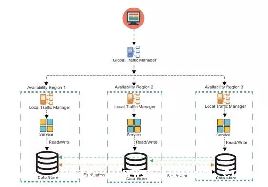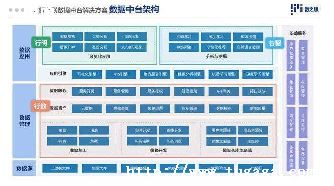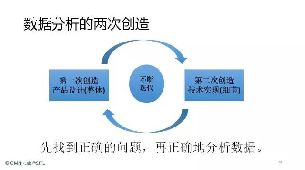

$d = array($a,$b,$c);
//计算每一个数组的长度
$len = 1;
$arrLen = count($d); //需要排列数组有多少个
$recIndex = null; //记录当前该取的位置

//foreach 计数
foreach ($d as $key = $value) {
$recIndex[] = 0;//第一次全部取第0个
}
//算出% 的值
$count = 1;

foreach ($lenRec as $key = $value) {
$moduloVal = 1;
if($arrLen == $count){
$modulo[] = count($d[$arrLen-1]); //等于最后一个的长度
}else{
$count_1 = 1;
foreach ($lenRec as $index = $item) {
$count_1 $count $moduloVal = $moduloVal*$item;
$count_1 ++;
$modulo[] = $moduloVal;
$count ++;//为了防止$d key是有值的 不是自然序列 需要计数
$i = 1;
while ( $i = $len) {
$html = '';
$temp = '';
foreach ($d as $value) {
echo $html."br";
foreach ($modulo as $key = $value) {
if($i%$value == 0 $key $arrLen - 1 ){
$recIndex[$key] = $recIndex[$key] +1;
if($key == $arrLen - 1){
if($i%$value == 0){
$recIndex[$key] = 0;
$i ++;
//改变获取的位置
#######?基本的数据结构?########
//二分查找(数组里查找某个元素)
function?bin_sch($array,?$low,?$high,?$k){?
if?($low?=?$high){?
if?($array[$mid]?==?$k){?
return?$mid;?
}elseif?($k?$array[$mid]){?
return?bin_sch($array,?$low,?$mid-1,?$k);?
}else{?
return?bin_sch($array,?$mid+1,?$high,?$k);?
}?
return?-1;?
//线性表的删除(数组中实现)

function?delete_array_element($array,?$i)
{
$len?=?count($array);?
for?($j=$i;?$j$len;?$j++){
$array[$j]?=?$array[$j+1];
array_pop($array);
return?$array;
//冒泡排序(数组排序)
function?bubble_sort($array)
$count?=?count($array);
if?($count?=?0)?return?false;
for($i=0;?$i$count;?$i++){
for($j=$count-1;?$j$i;?$j--){
if?($array[$j]?$array[$j-1]){
$tmp?=?$array[$j];
$array[$j]?=?$array[$j-1];
$array[$j-1]?=?$tmp;
//快速排序(数组排序)
function?quicksort($array)?{
if?(count($array)?=?1)?return?$array;
$key?=?$array[0];
$left_arr?=?array();
$right_arr?=?array();
for?($i=1;?$icount($array);?$i++){
if?($array[$i]?=?$key)
$left_arr[]?=?$array[$i];
else
$right_arr[]?=?$array[$i];
$left_arr?=?quicksort($left_arr);
$right_arr?=?quicksort($right_arr);
return?array_merge($left_arr,?array($key),?$right_arr);
#######?自实现函数?#######
//插入一段字符串
function?str_insert($str,?$i,?$substr)
for($j=0;?$j$i;?$j++){
$startstr?.=?$str[$j];
for?($j=$i;?$jstrlen($str);?$j++){
$laststr?.=?$str[$j];
$str?=?($startstr?.?$substr?.?$laststr);
return?$str;
//删除一段字符串
function?str_delete($str,?$i,?$j)
for?($c=0;?$c$i;?$c++){
$startstr?.=?$str[$c];
for?($c=($i+$j);?$cstrlen($str);?$c++){
$laststr?.=?$str[$c];
$str?=?($startstr?.?$laststr);
//复制字符串
for?($i=0;?$istrlen($s1);?$i++){
//连接字符串
$newstr?=?$s1;
for($i=0;?$icount($s);?$i++){
$newstr?.=?$st[$i];
return?$newsstr;
//简单编码函数(与php_decode函数对应)
function?php_encode($str)
for($i=0;?$istrlen($str);?$i++){
$c?=?ord($str[$i]);
$word?=?chr($c);
$s?.=?$word;
return?$s;?
//简单解码函数(与php_encode函数对应)
function?php_decode($str)
$c?=?ord($word);
//简单加密函数(与php_decrypt函数对应)
function?php_encrypt($str)
if?(strlen($str)?==?0)?return?false;
for?($i=0;?$istrlen($str);?$i++){
for?($j=0;?$jstrlen($encrypt_key);?$j++){
if?($str[$i]?==?$encrypt_key[$j]){
$enstr?.=?$decrypt_key[$j];
break;
return?$enstr;
//简单解密函数(与php_encrypt函数对应)
function?php_decrypt($str)
for?($j=0;?$jstrlen($decrypt_key);?$j++){
if?($str[$i]?==?$decrypt_key[$j]){
$enstr?.=?$encrypt_key[$j];
到此为止吧:)
队列这种数据结构更简单,就像我们生活中排队一样,它的特性是先进先出(FIFO).
PHP
SPL中SplQueue类就是实现队列操作,和栈一样,它也可以继承双链表(SplDoublyLinkedList)轻松实现.
SplQueue类摘要如下:
SplQueue简单使用如下:
复制代码
代码如下:
$queue
=
new
SplQueue();
/**
*
可见队列和双链表的区别就是IteratorMode改变了而已,栈的IteratorMode只能为:
(1)SplDoublyLinkedList::IT_MODE_FIFO
|
SplDoublyLinkedList::IT_MODE_KEEP
(默认值,迭代后数据保存)
SplDoublyLinkedList::IT_MODE_DELETE
(迭代后数据删除)
*/
$queue-setIteratorMode(SplDoublyLinkedList::IT_MODE_FIFO
SplDoublyLinkedList::IT_MODE_DELETE);
//SplQueue::enqueue()其实就是
SplDoublyLinkedList::push()
$queue-enqueue('a');
$queue-enqueue('b');
$queue-enqueue('c');
//SplQueue::dequeue()其实就是
SplDoublyLinkedList::shift()
print_r($queue-dequeue());
foreach($queue
as
$item)
echo
$item
.
PHP_EOL;
print_r($queue);
而优先队列SplPriorityQueue是基于堆(后文介绍)实现的.
SplPriorityQueue的类摘要如下:
SplPriorityQueue简单使用:
$pq
SplPriorityQueue();
$pq-insert('a',
①.0);
$pq-insert('b',
①.);
$pq-insert('c',
$pq-count()
.PHP_EOL;
$pq-current()
//a
设置元素出队模式
SplPriorityQueue::EXTR_DATA
仅提取值
SplPriorityQueue::EXTR_PRIORITY
仅提取优先级
SplPriorityQueue::EXTR_BOTH
提取数组包含值和优先级
$pq-setExtractFlags(SplPriorityQueue::EXTR_DATA);
while($pq-valid())
print_r($pq-current());
c
b
$pq-next();
数组就是典型的数据结构了,使用数组操作函数,就可以实现单向和多向队列了. 操作函数有: array_shift array_unshift array_push array_pop
数据库索引文件采用数据结构概述: 1、非主键索引需要在数据表本身的存储空间外额外开销存储空间,所以在更新的时候可能不仅要更新数据表本身,还要更新非主键索引,更新内容更多了,所以导致速度降低
以上就是土嘎嘎小编为大家整理的php多个数据结构相关主题介绍,如果您觉得小编更新的文章只要能对粉丝们有用,就是我们最大的鼓励和动力,不要忘记讲本站分享给您身边的朋友哦!!